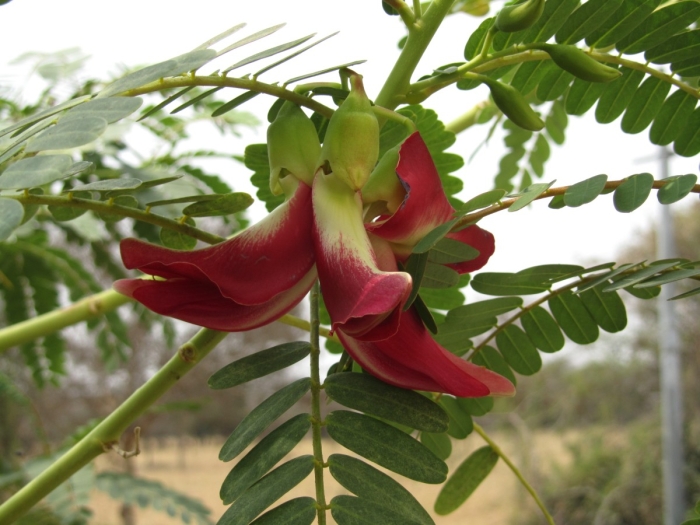Vegetable Hummingbird
(Sesbania grandiflora)
Vegetable Hummingbird (Sesbania grandiflora)
/
/

Viky.nandha
CC BY-SA 3.0





























Estimated Native Range
Summary
Vegetable Hummingbird is valued for its rapid growth and the edible nature of its flowers and leaves, which are used in various Southeast Asian and South Asian cuisines. It is also planted as an ornamental tree in tropical and subtropical regions for its attractive flowers and as a living fence in agricultural fields. This species prefers full sun but can tolerate part shade and requires a well-drained soil, although it is adaptable to various soil types. It is highly sensitive to frost and cannot tolerate cold climates. While it has low water needs, it thrives with regular watering in cultivation. Potential problems include susceptibility to root rot in poorly drained soils and pests such as aphids and caterpillars.CC BY-SA 4.0
Plant Description
- Plant Type: Tree
- Height: 20-40 feet
- Width: 15-30 feet
- Growth Rate: Rapid
- Flower Color: White, Pink
- Flowering Season: Spring, Summer
- Leaf Retention: Deciduous
Growth Requirements
- Sun: Full Sun, Part Shade
- Water: Medium
- Drainage: Medium
Common Uses
Bank Stabilization, Bee Garden, Bird Garden, Butterfly Garden, Drought Tolerant, Edible*Disclaimer: Easyscape's listed plant edibility is for informational use. Always verify the safety and proper identification of any plant before consumption., Erosion Control, Showy Flowers, Water Garden
Natural Habitat
Moist deciduous forests, wetlands, and riverbanks
Other Names
Common Names: Vegetable-Hummingbird, Scarlet Wistaria-Tree, West Indian-Pea, Agathi, Agati, Katurai
Scientific Names: , Sesbania grandiflora, Coronilla grandiflora, Agati grandiflora, Aeschynomene grandiflora, Agati grandiflora var. albiflora, Dolichos arborescens, Dolichos arboreus, Emerus grandiflorus, Resupinaria grandiflora,
GBIF Accepted Name: Sesbania grandiflora (L.) Poir.